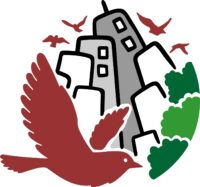PhD student
I graduated as a biologist at the Eötvös Loránd University in 2012, where I wrote my thesis about the “Closely related species of mice’s nesting habits”.
Between 2014 and 2018 I was obtaining my MSc. degree in environmental biology at the Utrecht University in the Netherlands, where I followed the behavioural ecology track and I developed a keen interest in ex-situ conservation and zoo conservation biology.
During this period I also did two research internships; the first one at the Veterinary department of the Utrecht University, where I conducted a welfare-related study: Consumer demand study to determine motivation for social enrichment of Grey parrots (Psittacus erithacus), which can help to improve captive housing conditions, to get a better insight of the behaviour needs of this species and help to improve feather damaging behaviour. I did my second research internship in Amersfoort Zoo in the Netherlands, where I did a multidisciplinary project titled “A case study on the effect of training as environmental enrichment on the behaviour of two Amur tigers (Panthera tigris altaica), and developing a non-invasive method for fur collection and a standard for hair cortisol analysis for this species”. The title of my Msc. thesis was “Records of the great bustard (Otis tarda) from the Dunántúl, the western part of Hungary from 1830 until 1979, based on a literature survey”.
Since 2017 I am working in the Budapest Zoo & Botanical Garden, currently as a zoological referent, and since September 2021 I have been a PhD student at the University of Pannonia at the HUN-REN-PE (formerly ELKH-PE; MTA-PE) Evolutionary Ecology Research Group. These two positions allow me to combine my two broad areas of interest: how can zoos bring forward science and vice-versa, how can science serve ex-situ conservation. For this, I am looking into the role of sex ratio, ecology, and demography in the evolution of the vertebrate reproductive system, comparing the demographics data collected from zoos with data from wild populations. This makes it possible to examine which environmental factors and how they affect the different life expectancies of the sexes and, through this, the adult sex ratio. In addition, it can help to develop appropriate husbandry technologies that can maintain species-specific demographics, which can improve the living conditions of captive animals and promote their successful breeding.
Scientific activities:
Papers:
Tóth, T., Varga, N., Gál, J., Kocsis, B. (2023) Expansion of the sharp-snouted rock lizard (Dalmatolacerta oxycephala) in the southern part of the island of Cres
Natura Croatica: Periodicum Musei Historiae Naturalis Croatici. 32(1): 121–126. https://doi.org/10.20302/NC.2023.32.7
Tóth T., Gál J., Varga N., Lukács A., Kocsis B. (2023) Data on the frog trade in the 20th century in Hungary. Biharean Biologist, 17(1), 39-44 [LINK]
Tóth, T., Varga, N., Kocsis, B., Marosán, M., Gál, J., & Géczy, C. (2020). A bird as food item of the Jayakar’s sand boa (Eryx jayakari Boulenger 1888) (Serpentes, Erycidae). Spixiana, 43(1), 160–160.
Conference presentations:
Kocsis, B. (2019). Blue crowned pigeon (Goura cristata) ESB. European Association of Zoos and Aquaria Annual conference, Pigeon and Dove TAG meeting, Athens, Greece.
Posters:
Kocsis, B., Bánszegi, O., Dúcs. A., Groó, Z., Kazi, A., Kopcsó. D., Szenczi, P. & Altbäcker, V. (2009). A nőstény fajtárs befolyása a fészeképítésre eltérő a házi és a güzü egérnél. Magyar Etológiai Társaság XI. kongresszusa, Göd, Hungary.


